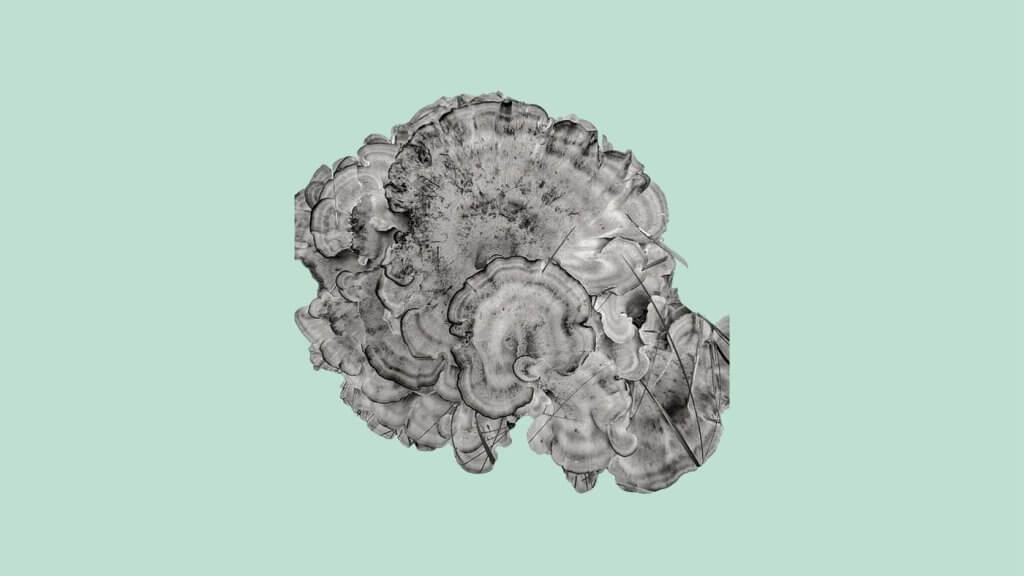Hen of the woods mushrooms (Grifola frondosa), also known as maitake, are easily identifiable mushrooms; there are hardly any poisonous lookalikes and these include Jack o' lantern, false turkey tail and gilled polypore.
That said, upon closer inspection, you’ll find that these wild mushroom lookalikes don’t have the same grayish undertones as the brownish-colored hen of the woods.
Poisonous/Inedible Hen of the Woods Lookalikes
1. Jack-o’-Lantern (Omphalotus illudens)
Jack-o’-lantern mushrooms have a bright orange color and grow in clusters at the base of trees. They don’t resemble closely hen of the woods, but some superficial similarities might deceive some people. byJack-o’-lantern mushrooms are poisonous and should not be consumed. They contain toxins that can cause severe gastrointestinal distress.
How to spot the difference?
True gills are present in Jack-o’-lantern mushrooms. The gills are bright orange and run down the stem. They may glow in the dark, giving the mushroom its name. Unlike Jack-o’-lantern, Hen of the woods does not have true gills. Instead, it has a soft, spore-bearing surface underneath the caps.
What Are You Foraging For Right Now?
We're thrilled to hear your ideas. What would you like to submit today? Feel free to share your thoughts and experiences with us.
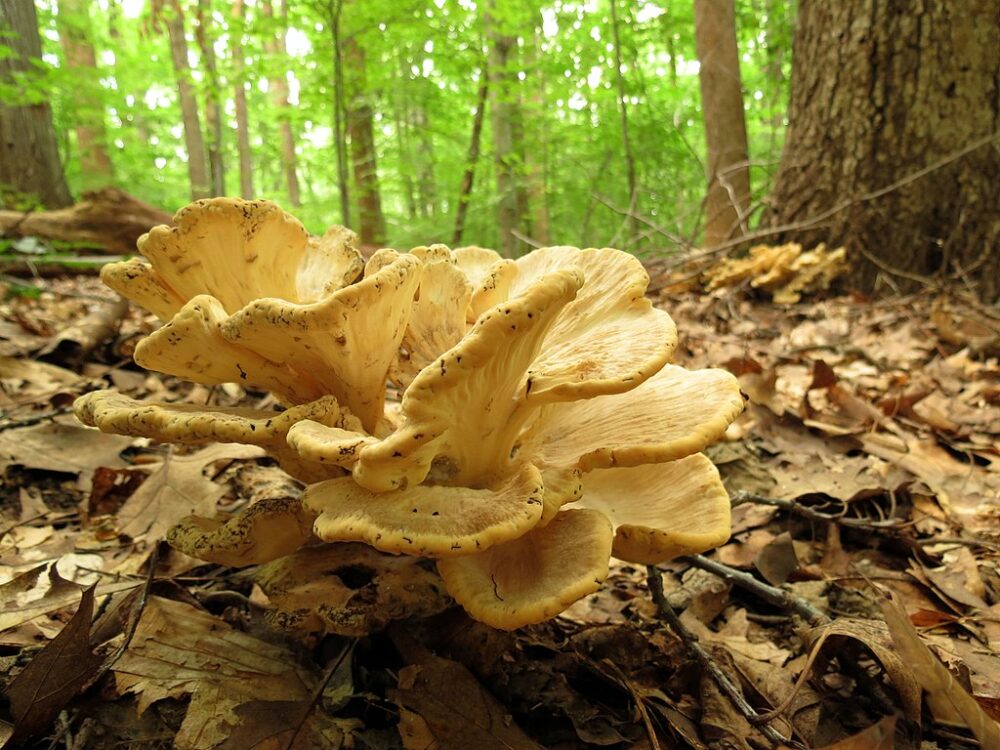
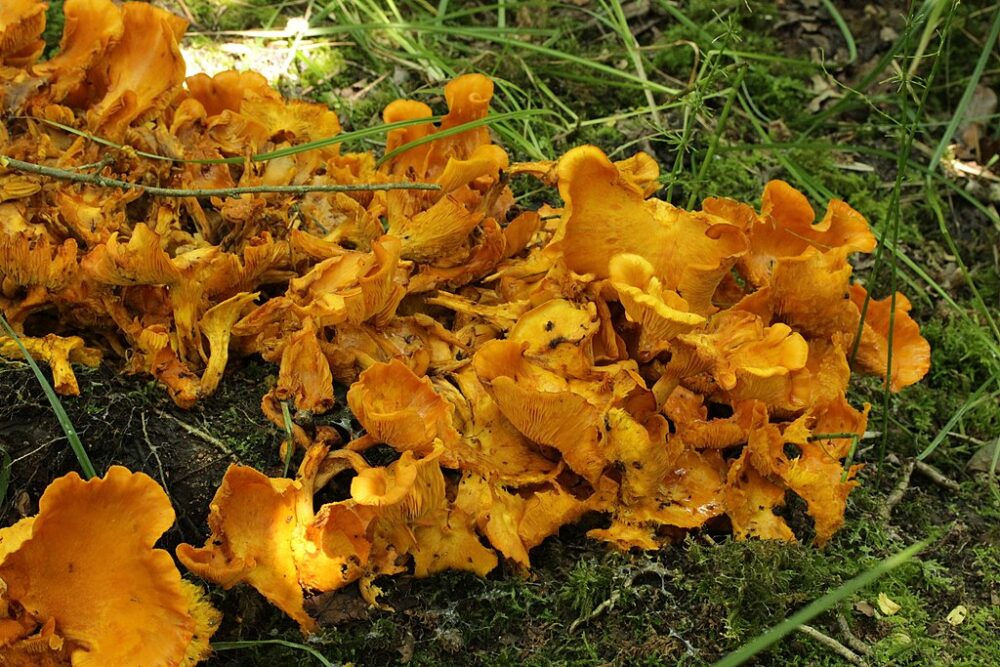
2. False Turkey Tail (Stereum ostrea)
False turkey tail typically forms thin, leathery brackets or shelves on dead wood, often on deciduous trees. While not considered highly toxic, false turkey tail is not commonly consumed. It is tough and not palatable.
How to spot the difference?
The upper surface of false turkey tail can be smooth to somewhat hairy or velvety. It lacks the distinct layered structure seen in hen of the woods. The underside of false turkey tail does not have pores. Hen of the woods has a soft, spore-bearing surface on the underside of the caps.
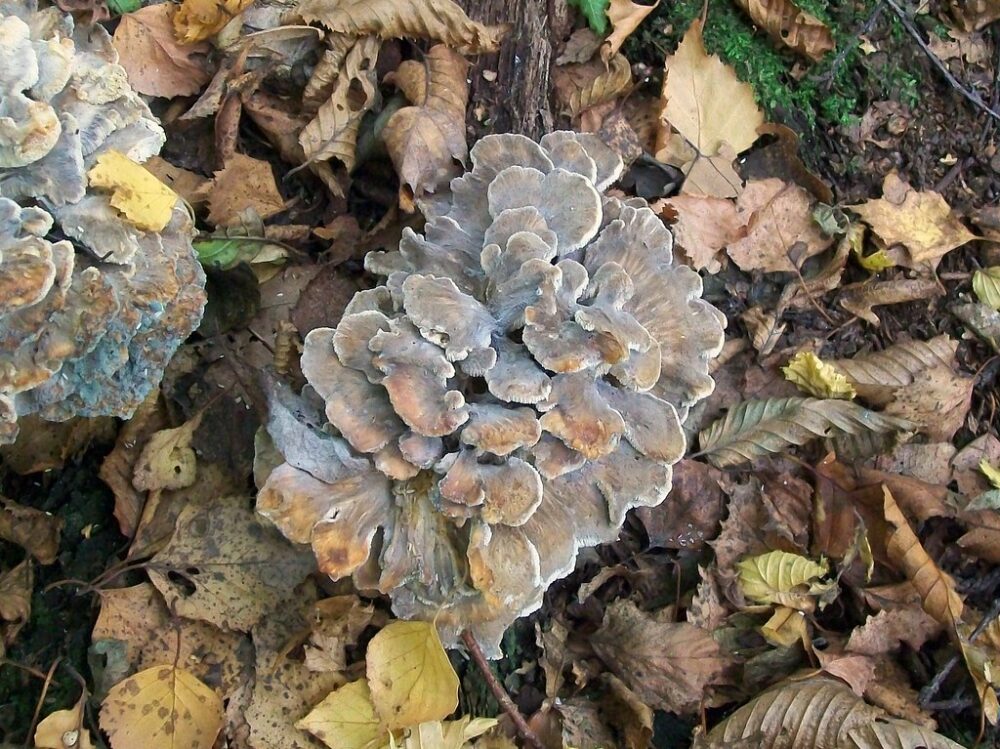
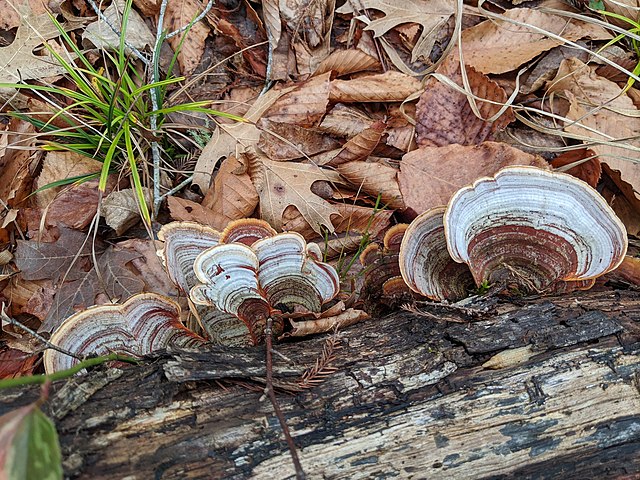
3. Gilled Polypore (Lenzites betulina)
Gilled polypore typically forms flat, bracket-like structures that grow on the wood of deciduous trees. The brackets can vary in size and shape but often have a shelf-like appearance. While not toxic, these mushroom is considered inedible.
The color and structure of this mushroom can resemble hen of the woods.
How to spot the difference?
Gilled polypore has a cap with gills, unlike the spore-bearing surface of hen of the woods. The upper surface of hen of the woods consists of multiple layers of overlapping caps. These caps are often beige to brownish and have a softer, fleshy texture compared to gilled polypore.
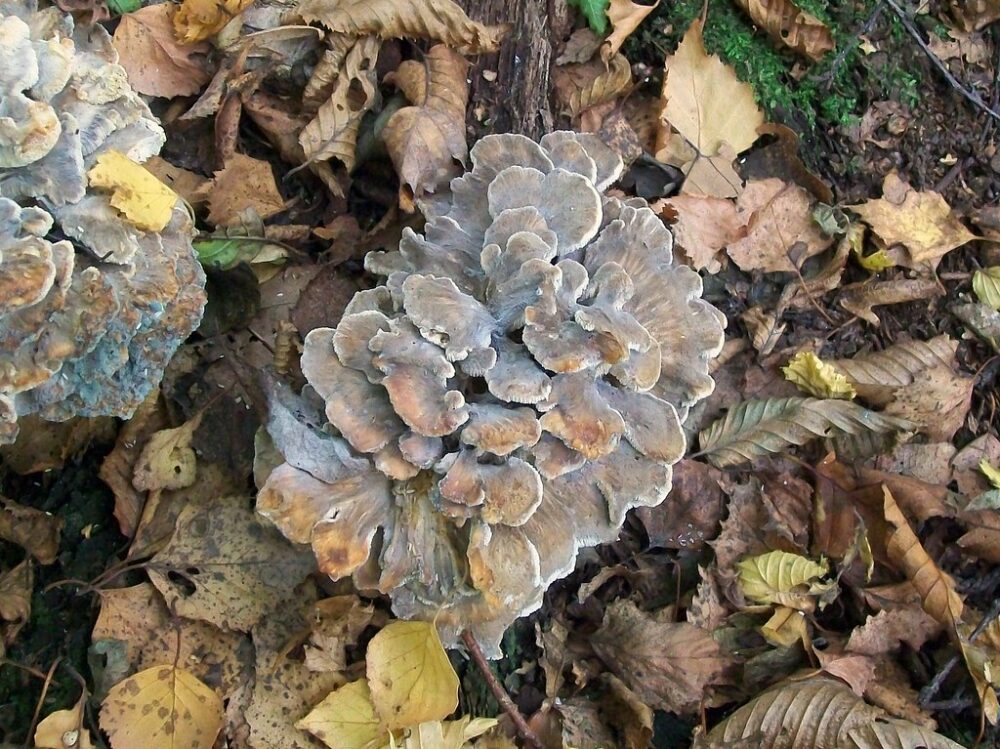
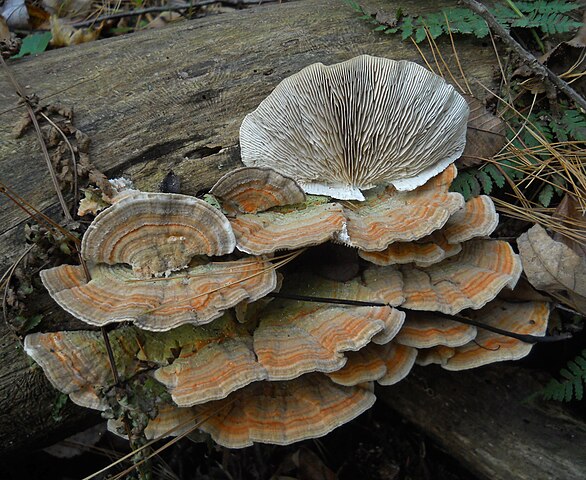
Edible Hen of the Woods Lookalikes
1. Black Staining Polypore (Meripilus sumstinei)
Black staining polypore is edible and typically grows in shelf-like clusters on the wood of hardwood trees, especially oak trees and other deciduous species. The cap stains black when bruised or touched.
How to spot the difference?
One of the distinctive features of the black staining polypore is the black staining reaction. When the mushroom is bruised or injured, it quickly turns black; this does not happen with hen of the woods.
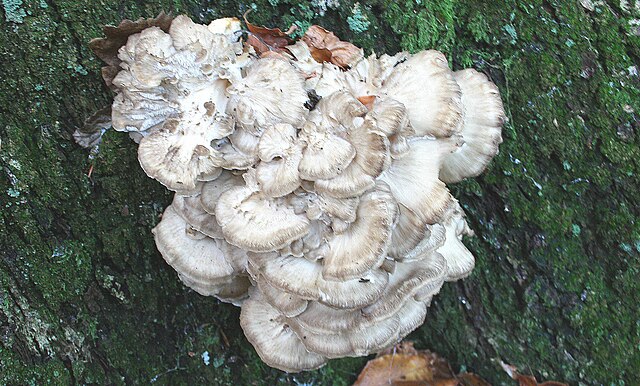

2. Berkeley’s Polypore (Bondarzewia berkeleyi)
Berkeley’s polypore is edible and has a large, fan-shaped cap that may resemble hen of the woods from a distance. Berkeley’s polypore typically has a large, singular, and centrally attached cap that resembles a shelf or bracket. It doesn’t form the layered clusters characteristic of Hen of the Woods.
How to spot the difference?
Berkeley’s polypore typically has a single, robust cap with a different growth form. Hen of the woods forms a distinct cluster of overlapping caps with a softer texture.
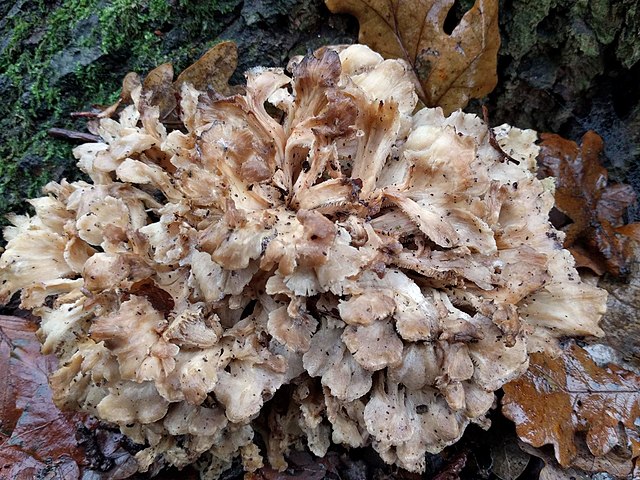
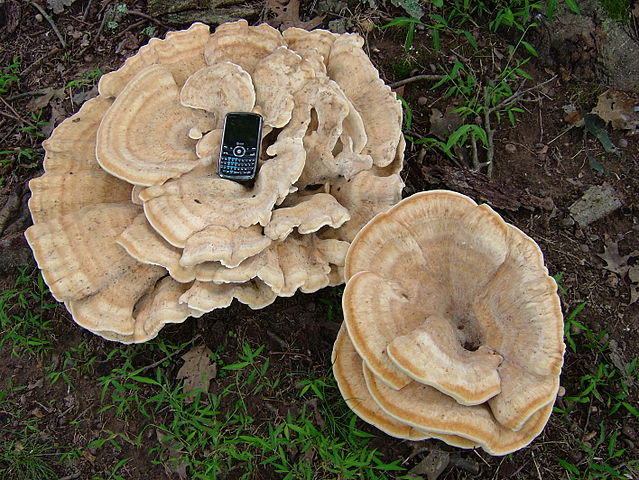
3. Giant Polypore (Meripilus giganteus)
The Giant polypore is an edible mushroom species characterized by its large, central cluster of overlapping caps. The caps are typically fan-shaped and can display various shades of brown or tan, resembling hen of the woods.
How to spot the difference?
Giant polypore often has a central, clustered rosette appearance with shorter, thicker stems. Hen of the woods forms a distinct cluster of overlapping caps with a softer texture and a central stem.
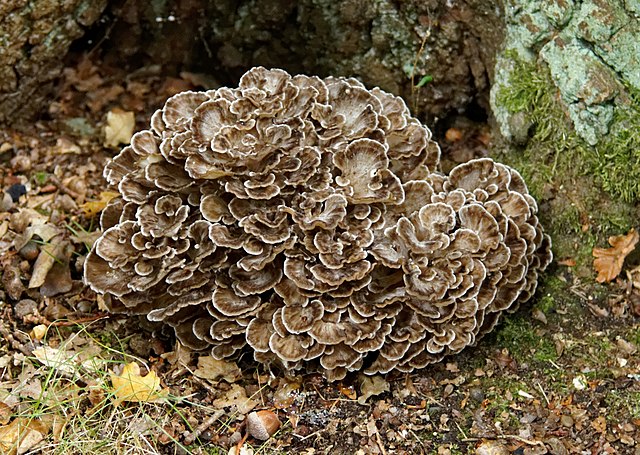
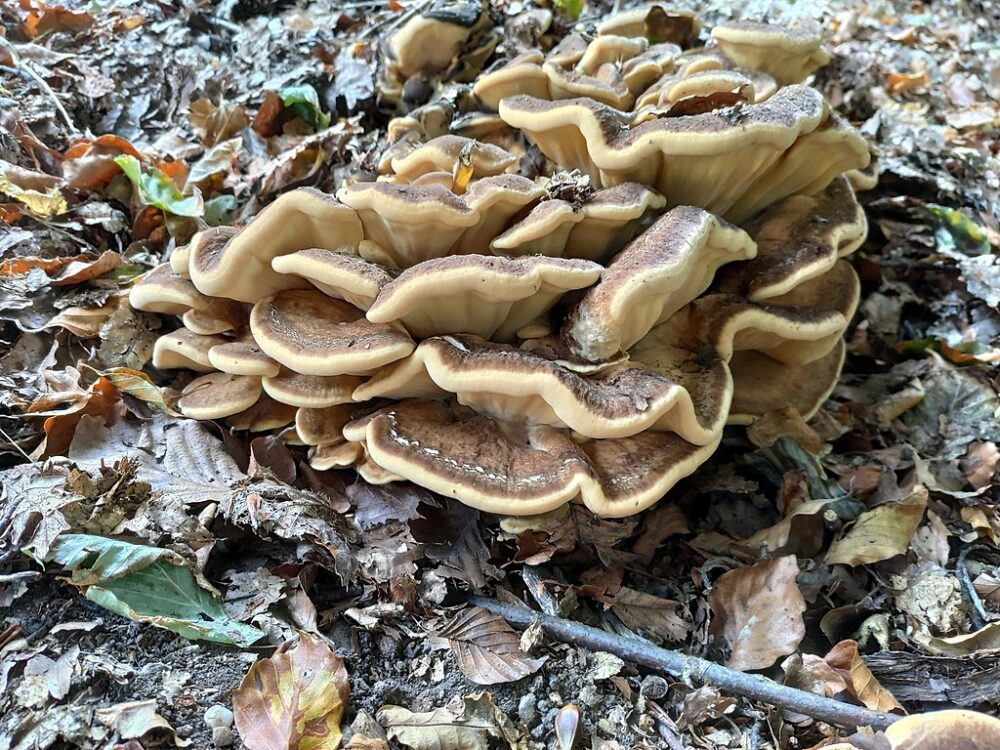
What Features Should I Look for to Identify True Hen of the Woods?
To identify true Hen of the Woods (Grifola frondosa), look for the following key features:
- Growth Form: Hen of the woods has a unique growth form with large, overlapping, fan-shaped or layered caps that form a cluster at the base of hardwood trees, particularly oaks. The caps are often arranged like the plumage of a nesting hen.
- Cap Structure: The upper surface of the caps is composed of multiple layers that overlap, creating a distinctive and robust structure. The caps are often beige to brownish and have a soft, fleshy texture.
- Stem: Hen of the Woods has a central stem that attaches the caps to the substrate. While the stem is present, it is not as thick or prominent as the stem of some other polypores.
- Underside: Instead of true gills, hen of the woods has a soft, spore-bearing surface on the underside of the caps.
- Color: The color of hen of the woods can vary, but it typically ranges from beige to brownish. The mushroom’s appearance may resemble the colors of autumn leaves.
- Texture: The texture of hen of the woods is soft and fleshy when young. As the mushroom matures, it may become tougher, but it is still considered edible when properly prepared.
- Habitat: Hen of the woods is commonly found at the base of hardwood trees, especially at the base of oaks, but it can also appear near other deciduous trees. It has a mycorrhizal relationship with the host tree.
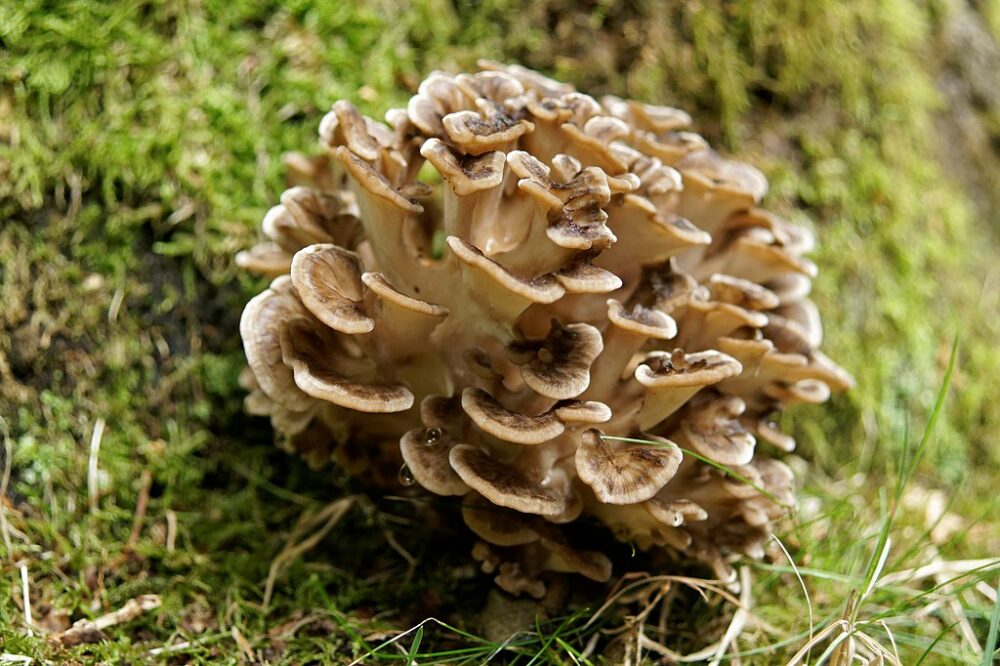

Are There Specific Regions Where Hen of the Woods is Commonly Mistaken for Its Lookalikes?
Some regions may have polypores or shelf fungi that share a similar growth form with Hen of the Woods. For example, species like the Berkeley’s polypore or the black staining polypore can resemble hen of the woods and are found in various locations.
Make sure also to check our guides on other edible mushrooms that may be confused with toxic lookalikes:
Ana has always been interested in all things nature and flora. With her expertise in home gardening and interest in foraging, she has been spending her weekends and free time looking for edible native plants, flowers, and fungi. One of her many hobbies includes testing new savory and sweet recipes, juices or teas made from freshly picked plants, wild fruits, or mushrooms.

